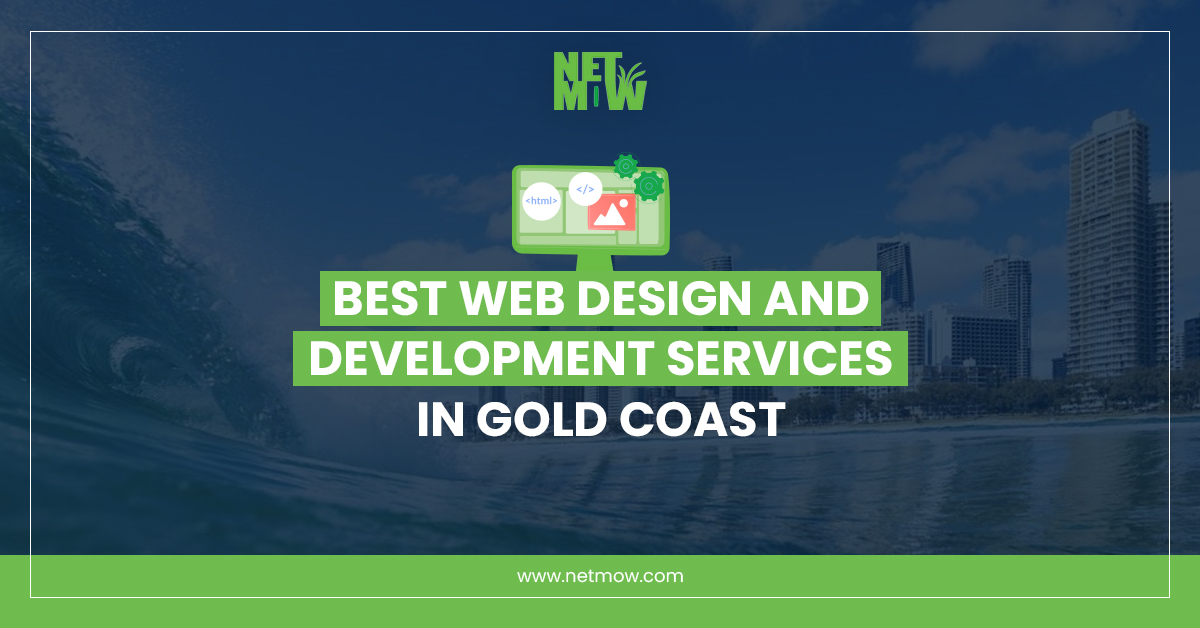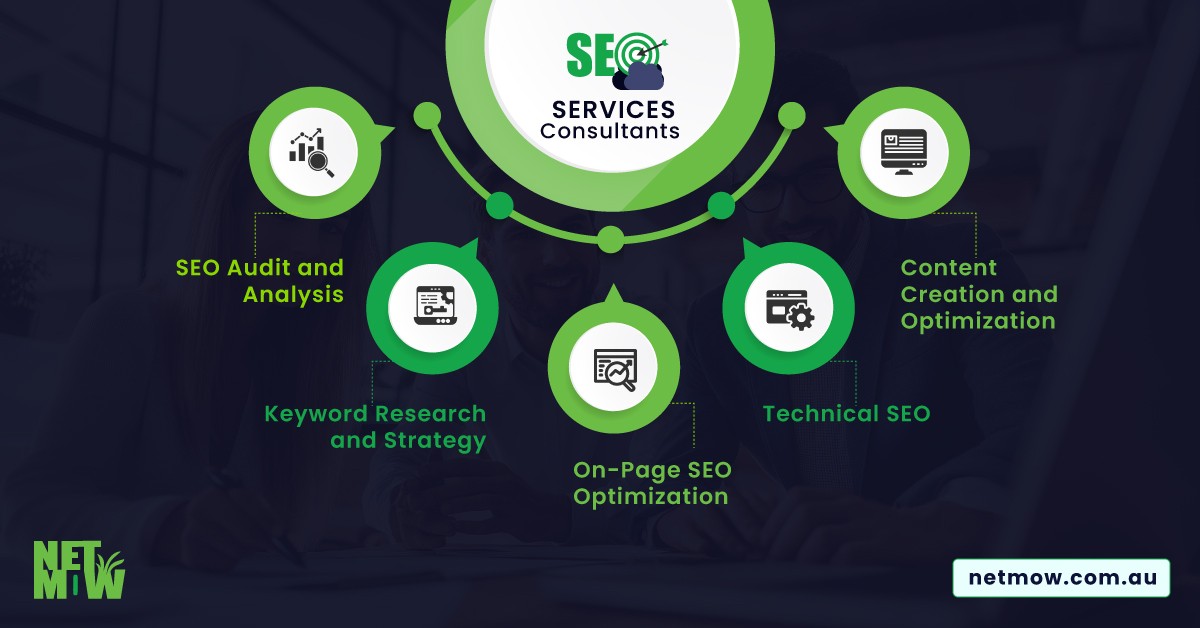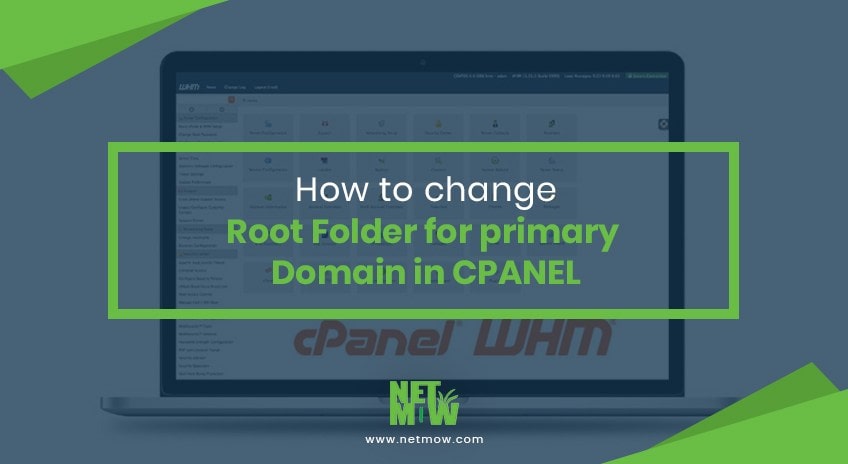
In today’s digital world, your website is the cornerstone of your online presence. Website development services are vital for creating a strong, effective, and user-friendly website that attracts visitors and keeps them engaged. Whether launching a new business, redesigning an existing site, or enhancing your online capabilities, understanding what these services entail can help you make informed decisions. This guide will explore different facets of website development services, explaining their significance, the process involved, and how to choose the right provider for your needs.
What Are Website Development Services?
Definition and Scope
Website development services encompass various activities involved in creating and maintaining a website. These services go beyond just building a website; they include:
- Design: Crafting the visual layout and user interface (UI) to ensure the site is aesthetically pleasing and functional.
- Development: Writing the code that powers the website, ensuring it functions correctly and integrates with necessary systems.
- Testing: Evaluating the website for functionality, usability, and performance to ensure it meets all requirements before launch.
- Launch: Deploying the website on a live server and making it accessible to users.
- Maintenance: Providing ongoing support to fix issues, update content, and improve performance.
Types of Website Development Services
Different types of website development services cater to various needs:
- Custom Website Development
- Custom solutions crafted to address unique business needs.
- Involves unique design and coding, ensuring the website aligns with your brand identity and goals.
- E-commerce Website Development
- Ecommerce website development focuses on building online stores with functionalities like shopping carts, product catalogues, and payment gateways.
- Provides a secure and smooth shopping experience for customers.
- Content Management Systems (CMS)
- Mobile Website Development
- Optimises websites for mobile devices, ensuring they are responsive and provide a good user experience on smartphones and tablets.
- Website Maintenance and Support
- Ongoing services to keep the website updated, secure, and running smoothly.
- Includes bug fixes, performance improvements, and content updates.
Examples of Top CMS Platforms:
| CMS Platform | Features | Ideal For |
| WordPress | Extensive plugin options, customisable themes | Blogs, business websites, e-commerce |
| Joomla | Flexibility, strong content management | Complex websites, social networking sites |
| Drupal | Advanced features, scalability | Large-scale websites, complex applications |
Choosing the right service ensures your website meets your business goals.
Why Your Business Needs Professional Website Development
First Impressions Matter
A website is often the first point of contact between your business and potential customers. Website development services are pivotal in shaping this first impression. A professionally designed and well-developed website:
- Enhances Brand Image: A visually appealing modern website boosts credibility and distinguishes you from competitors.
- Builds Trust: Clean design, clear information, and secure browsing foster user trust.
Functionality and User Experience
A website must not only look good but also provide a seamless user experience:
- User-Friendly Design: Easy navigation and intuitive controls help visitors find information quickly.
- Responsive Design: A mobile-friendly website is crucial, as over 54% of global website traffic comes from mobile devices.
SEO and Online Visibility
Website development services are crucial for boosting SEO (Search Engine Optimisation). Engaging a search engine optimisation consultant can further enhance this process. A well-developed website improves search engine rankings through:
- SEO-Friendly Design: Clean code, fast loading times, and proper HTML tag usage enhance SEO performance.
- Optimised Content: High-quality, well-structured, and keyword-optimised content, often guided by a search engine optimisation expert, attracts more organic traffic.
Chart:
| SEO Factor | Impact on Ranking |
| Site Speed | High |
| Mobile-Friendliness | High |
| Use of Keywords | Medium |
| Quality Content | High |
| Backlinks | High |
Investing in professional web development ensures your site is attractive, optimised, and visible to your target audience.
Key Features of Effective Website Development Services
Custom Design and Development
Custom website design and development offers numerous advantages:
- Unique Branding: Custom websites provide a unique design that reflects your brand’s identity.
- Tailored Functionality: Custom features, such as booking systems or specialised layouts, can be developed to meet specific business needs.
- Scalability: Custom websites are designed to scale alongside your business, allowing for future updates and expansion.
Content Management Systems (CMS)
A CMS simplifies website management and content updates. Key benefits include:
- Ease of Use: CMS platforms like WordPress, Joomla, and Drupal simplify content management without needing technical skills. For WordPress users, specialised services like WordPress website maintenance ensure that your site remains secure, up-to-date, and fully functional.
- Flexibility: Easily update content, add new pages, and manage multimedia.
- Extensions and Plugins: CMS platforms offer tools to enhance functionality, such as SEO plugins and social media integration.
Comparison Table:
| CMS Platform | Pros | Cons |
| WordPress | User-friendly, extensive plugin ecosystem | Can be vulnerable to security issues |
| Joomla | Flexible, good for complex sites | Steeper learning curve |
| Drupal | Highly customisable, scalable | Requires more technical knowledge |
E-Commerce Functionality
For online retailers, having a robust e-commerce platform is crucial. Key features to consider:
- Shopping Cart Integration: A smooth shopping experience with easy product selection and checkout.
- Payment Gateways: Secure options like PayPal and Stripe for efficient transactions.
- Product Management: Tools to manage inventory, pricing, and product descriptions.
Fact: A well-designed e-commerce site can increase conversion rates by up to 30%.
Mobile Optimisation
- Responsive Design: Ensures websites adapt to different devices and screen sizes.
- Fast Load Times: Optimising for mobile includes reducing image sizes and improving server response time.
Statistics: Google’s data shows that 53% of mobile users leave websites that take over 3 seconds to load.
Website Performance and Speed
- Page Load Speed: Faster load times improve user experience and SEO rankings.
- Performance Monitoring: Regular audits and monitoring help detect and fix issues promptly.
Chart:
| Performance Metric | Ideal Value | Impact on User Experience |
| Page Load Time | Under 3 seconds | High |
| Server Response Time | Under 200ms | High |
| Mobile Optimisation | 100% | High |
Security Features
- SSL Certificates: Encrypt data and build trust, favoured by Google in rankings.
- Firewalls: Web application firewalls protect against malicious traffic.
- Regular Updates: Keeps software and plugins updated to prevent security vulnerabilities.
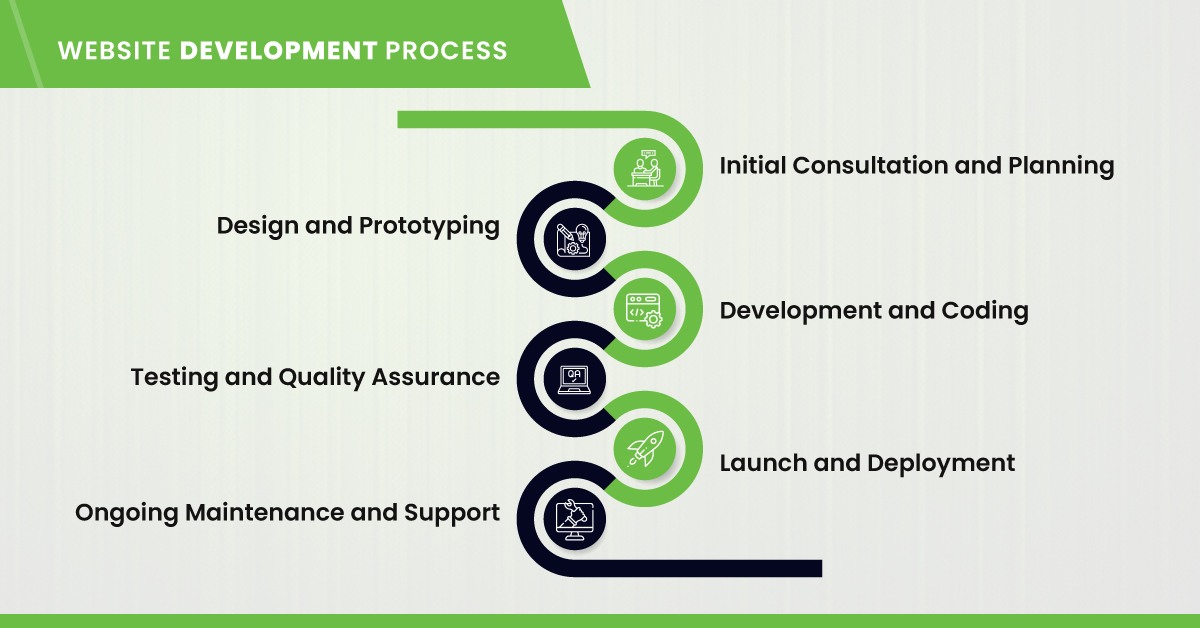
The Website Development Process
Initial Consultation and Planning
The website development process begins with a detailed consultation and planning phase:
- Understanding Needs: The development team identifies your business goals, target audience, and specific requirements.
- Defining Objectives: Objectives like improving brand presence, increasing sales, or enhancing user experience are set.
- Project Scope and Timeline: Clear scope and timelines are established to align expectations.
Checklist:
- Define project goals
- Identify target audience
- Outline desired features and functionalities
- Set a project timeline and budget
Design and Prototyping
- Wireframes & Mockups: The visual layout and structure of the site are created, allowing revisions based on feedback.
- Feedback & Revisions: Review designs and make necessary revisions to meet your vision.
Development and Coding
- Front-End Development: Building the user interface using HTML, CSS, and JavaScript.
- Back-End Development: Server-side programming and database management ensure functionality.
- Integration: Tools, APIs, and CMS integration add functionality.
Testing and Quality Assurance
- Functionality Testing: Ensures all features work as expected.
- Usability Testing: Ensures ease of use and intuitive navigation.
- Performance Testing: Tests website speed and performance.
Checklist:
- Test all functionalities and features.
- Evaluate user experience and interface.
- Check website performance and speed.
- Conduct security testing
Launch and Deployment
- Final Review: Ensures everything works properly.
- Deployment: Launches the website on a live server.
- Post-Launch Monitoring: Monitors for bugs, performance, and user feedback.
Ongoing Maintenance and Support
- Regular Updates: Keep software, plugins, and content up-to-date.
- Performance Monitoring: Continuously monitor and optimise performance.
- Technical Support: Address issues that arise post-launch.
Choosing the Right Website Development Services
Key Considerations for Choosing a Website Development Service
Selecting the right website development services provider is crucial for achieving your online goals. Here are key factors to consider:
- Experience and Expertise: Seek a provider with a demonstrated history of success in your industry. Experienced developers understand best practices and deliver high-quality results.
- Portfolio and Case Studies: Review the provider’s portfolio and case studies to evaluate their design style and capabilities, ensuring they align with your vision.
- Client Reviews and Testimonials: Check client reviews to evaluate reliability, communication, and performance.
Checklist:
- Verify experience in your industry
- Examine the portfolio for similar projects
- Read client reviews and testimonials
- Evaluate the provider’s technical skills and expertise
Budget and Cost Considerations
- Project Scope: The complexity of the project impacts cost. Custom features and design may increase the budget.
- Pricing Models: Choose between fixed-price, hourly rate, or retainer-based models depending on your project and budget.
- Additional Costs: These are factors in ongoing maintenance and support services.
Table:
| Pricing Model | Description | Pros | Cons |
| Fixed-Price | A set price for the entire project | Predictable costs, no surprises | Less flexibility for scope changes |
| Hourly Rate | Charges based on the number of hours worked | Flexibility in project scope | Costs can vary based on time spent |
| Retainer-Based | Regular payments for ongoing services | Consistent support and updates | May not cover all project aspects |
Technical Skills and Services Offered
- Front-End & Back-End Development: Ensure expertise in both for a complete website.
- CMS Expertise: If using a CMS like WordPress, verify your experience with that platform.
- SEO & Digital Marketing: Evaluate the availability of SEO services to enhance your website’s visibility and search engine ranking.
Communication and Collaboration
- Project Management: Strong project management ensures timely delivery.
- Communication Channels: Ensure clear communication for updates and feedback.
- Collaboration Tools: Modern collaboration tools keep everyone informed.
Long-Term Support and Maintenance
- Maintenance Services: Confirm post-launch services like updates and security checks.
- Support Availability: Ensure support is available and response times are reasonable.
Benefits of Professional Website Development Services
Enhanced User Experience
Professional website development services offer several benefits for improving user experience:
- Intuitive Navigation: User-friendly navigation helps visitors easily find information and complete actions.
- Responsive Design: Ensures the website functions well across all devices.
- Engaging Design: Visually appealing websites improve user satisfaction and retention.
Statistic: 76% of users prefer aesthetically pleasing websites, highlighting the importance of design.
Improved Search Engine Optimisation (SEO)
- Optimised Code: Clean code helps search engines crawl and index the site effectively.
- SEO Best Practices: Proper use of meta tags, alt text, and structured data boosts rankings.
- Performance Optimisation: Faster loading times improve both SEO and user experience.
Increased Security
- Secure Coding: Protects against vulnerabilities and cyber threats.
- SSL Certificates: Ensures encrypted, secure data transmission.
- Regular Updates: Ongoing security patches protect from emerging threats.
Scalability and Future-Proofing
- Scalable Solutions: Designed to expand your business, accommodating future feature enhancements.
- Adaptability: Flexible design makes adapting to changing needs and technologies easier.
Statistic: Businesses with scalable websites grow 30% faster than those with less adaptable systems.
Time and Cost Efficiency
- Efficient Development: Reduces the time to build and launch the site.
- Reduced Risk of Errors: Professional development minimises costly errors and rework.
- Ongoing Support: Ensures issues are promptly addressed, preventing downtime and extra costs.
Fact: Investing in professional development can reduce time spent on website issues by 50%.
Conclusion
Selecting the appropriate website development services is essential for creating a strong online presence. Focusing on custom design, functionality, and user experience, professional development services offer enhanced SEO, security, scalability, and cost efficiency.
Opting for professional website development is a strategic choice that drives long-term success. Whether you need a custom site, e-commerce functionality, or ongoing maintenance, partnering with an experienced provider will support you in reaching your digital goals and stay competitive.
To learn more or to Schedule a Consultant, visit Netmow.
Related Article

Best Reasonable and Affordable Custom Web Design and Development Agency in the Gold Coast

Grow Your Business Using Web Development
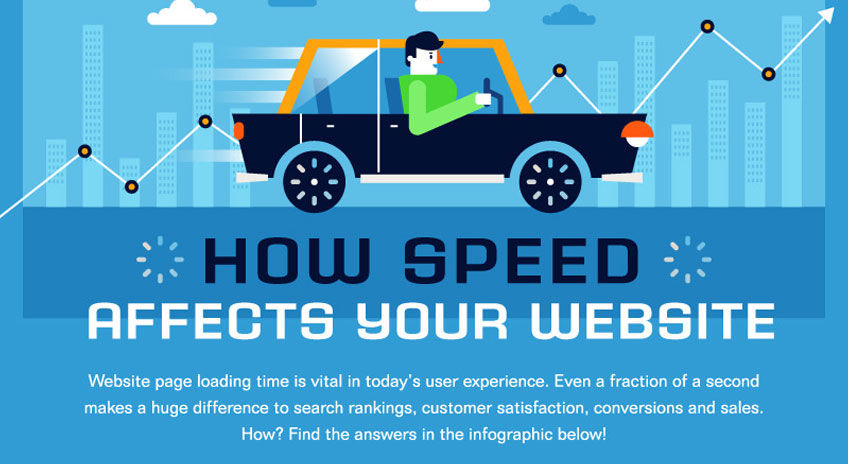
20+ Website Load Time Statistics [Infographic – How Speed Affects Your Website]
